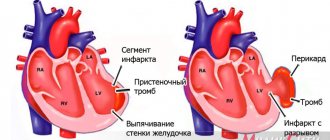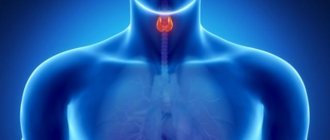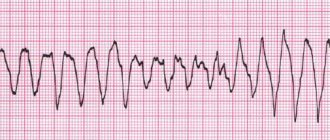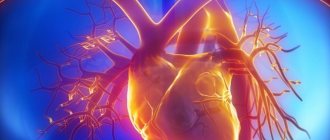Shortness of breath, chest pain, weakness, dizziness occur with heart disease. Below in the article you will find the causes of the disease;
the doctors who treat him; necessary medical procedures for treatment; as well as general information about the disease, its localization, features of diagnosis of diseases and their treatment. However, we advise you to consult a doctor, because self-medication in 90% of cases is fraught with the disease progressing to the chronic stage with extremely unpleasant complications. Make an appointment and consultation
WHEN YOU SHOULD SOUND THE ALARM, THE FIRST SYMPTOMS OF CARDIOMYOPATHY
Symptoms can appear at any age; usually they are not very noticeable to the patient and do not cause him concern until a certain point. Patients with cardiomyopathy achieve a normal life expectancy and live to a ripe old age. However, the course of the disease can be complicated by the development of serious complications.
The symptoms are quite common and can be easily confused with other diseases. These include
- shortness of breath, which in the initial stage occurs only with severe physical exertion;
- chest pain,
- dizziness,
- weakness.
These symptoms occur due to dysfunction of the contractility of the heart.
The question arises, when should you seek help from a doctor? Many of the listed symptoms may be a physiological feature of each of us or may not be serious in nature, as a manifestation of a chronic pathology. It is worth considering if chest pain is of a prolonged “aching” nature and is combined with severe shortness of breath.
If there are swelling of the legs, a feeling of lack of air during physical activity and sleep disturbance. Unexplained fainting, which may occur due to lack of blood supply to the brain. Do not wait for further complications to develop, consult a doctor.
Cardiomyopathies
Diabetes
Thyrotoxicosis
21524 November 25
IMPORTANT!
The information in this section cannot be used for self-diagnosis and self-treatment.
In case of pain or other exacerbation of the disease, diagnostic tests should be prescribed only by the attending physician. To make a diagnosis and properly prescribe treatment, you should contact your doctor. Cardiomyopathy: causes, symptoms, diagnosis and treatment methods.
Definition
Cardiomyopathies (CM) are a group of heterogeneous (dissimilar) diseases characterized by pathology of the heart muscle with its structural and/or functional disorders that are not caused by coronary heart disease, hypertension, valvular defects and congenital diseases.
Causes of cardiomyopathies
It is believed that cardiomyopathy occurs as a result of a combination of various factors: genetic (gene mutations), autoimmune inflammation (in some bacterial and viral diseases), organ damage in a generalized (multiple organ) disease.
Classification of cardiomyopathies
According to the World Health Organization classification, cardiomyopathies are divided into idiopathic, specific and unclassified myocardial diseases.
Idiopathic cardiomyopathies:
- dilatational;
- hypertrophic (obstructive or non-obstructive);
- restrictive;
- arrhythmogenic dysplasia of the right ventricle;
- periportal (postpartum).
Specific cardiomyopathies (associated with a specific systemic or non-systemic disease):
- infectious;
- metabolic:
- endocrine (for hypo- and hyperthyroidism, myxedema, acromegaly, pheochromocytoma, diabetes mellitus, obesity),
- for storage diseases (amyloidosis, hemochromatosis, sarcoidosis, leukemia, mucopolysaccharidosis, glycogenosis, lipidosis),
- with a deficiency of microelements, nutrients and electrolyte imbalance;
Unclassified myocardial diseases include endomyocardial fibroelastosis, or the childhood form of cardiomyopathy, and idiopathic Fiedler's myocarditis.
Symptoms of cardiomyopathy Hypertrophic cardiomyopathy
Clinical manifestations vary from asymptomatic forms to severe disturbances in the functioning of the heart - up to sudden death, which is most often recorded in childhood or adolescence during physical activity or immediately after it.
Patients are concerned about the following symptoms:
- shortness of breath during exercise (in some patients at rest and at night), caused by venous stagnation of blood in the lungs due to diastolic dysfunction of the enlarged left ventricle of the heart;
- cardialgia associated with a discrepancy between coronary blood flow and myocardial weight;
- dizziness and syncope (fainting); in children they are observed during physical activity and emotional stress;
- rapid heartbeat due to heart rhythm disturbances;
- fast fatiguability.
Dilated cardiomyopathy
The disease is characterized by dilation (stretching) of the left ventricle with impaired pumping function of the heart in the absence of other diseases (arterial hypertension, valvular pathology, coronary heart disease) that could cause such disorders. The main clinical symptoms usually appear gradually, and in some patients are absent altogether, despite the presence of ventricular dilatation for months or even years. By the time of diagnosis, 73% of patients have symptoms of congestive heart failure. Patient complaints are usually associated with manifestations of congestive heart failure: heart pain, shortness of breath, general weakness and fatigue, peripheral edema, rapid heartbeat, heaviness in the right hypochondrium and epigastrium, symptomatic angina.
Restrictive cardiomyopathy
With the disease, the walls of the ventricles become rigid, inextensible (not necessarily thickened), which prevents the heart from filling the heart normally with blood between beats. Symptoms are determined by the severity of heart failure, and the disease can be asymptomatic for a long time. Patients are concerned about weakness, increased fatigue, shortness of breath even with slight physical exertion, cough, which may worsen in a lying position, swelling, abdominal enlargement, and in children, delay in physical development.
Arrhythmogenic right ventricular cardiomyopathy
The disease is characterized by the progressive replacement of right ventricular heart cells with adipose or fibrofatty tissue, leading to atrophy and thinning of the ventricular wall, and its dilatation.
For a long time, arrhythmogenic cardiomyopathy is asymptomatic, although the organic damage underlying the disease slowly progresses. Clinical signs of the disease (palpitations, paroxysmal tachycardia, dizziness and/or fainting) usually appear in adolescence. The leading clinical manifestations are life-threatening arrhythmias and sudden cessation of blood circulation, which occurs during exercise or strenuous sports activity.
Ischemic cardiomyopathy
The disease is caused by diffuse morphofunctional disorders that develop as a result of chronic and episodes of acute myocardial ischemia.
The development of ischemic cardiomyopathy can result from extensive myocardial infarction or numerous small focal infarctions.
In typical cases, the clinical picture includes exertional angina, cardiomegaly (enlarged heart), chronic heart failure (and some patients have no clinical and ECG signs of angina).
Symptoms are identical to those of heart failure in patients with dilated cardiomyopathy.
Hypertensive cardiomyopathy
The disease develops against a background of uncontrolled high blood pressure over a long period of time.
The intensity of symptoms depends on the severity of the disease and the nature of its course. The most common complaints of patients include pain and tightness in the chest, shortness of breath, cough, lack of appetite, and peripheral edema.
Metabolic cardiomyopathy
Metabolic cardiomyopathy is a non-inflammatory lesion of the myocardium, which is based on a metabolic disorder leading to myocardial dystrophy and insufficient contractile function of the heart.
Clinical manifestations are varied and not specific, and the initial stage of the disease can occur without any symptoms at all, but over time, in the absence of proper treatment, severe heart failure develops.
Inflammatory cardiomyopathy
The disease is a combination of myocarditis and myocardial dysfunction. Patients complain of chest pain, often radiating to the left arm, attacks of rapid heartbeat, shortness of breath during exercise and then at rest, peripheral edema, and fatigue.
Diagnosis of cardiomyopathy
Diagnosis of cardiomyopathy is based on collecting anamnesis and laboratory and instrumental examinations of the patient. The main diagnostic criterion for cardiomyopathy is the presence of myocardial dysfunction, detected by ultrasound examination of the heart.
DIAGNOSIS OF CARDIOMYOPATHIES
When diagnosing cardiomyopathies, the clinical picture of the disease and data from additional instrumental methods are taken into account. The ECG usually shows signs of myocardial hypertrophy, various forms of rhythm and conduction disturbances, and changes in the ST segment of the ventricular complex. X-ray of the lungs can reveal dilatation, myocardial hypertrophy, and congestion in the lungs.
Particularly informative for cardiomyopathies are EchoCG data that determine myocardial dysfunction and hypertrophy, its severity and the leading pathophysiological mechanism (diastolic or systolic failure). According to indications, it is possible to conduct an invasive examination - ventriculography. Modern methods of visualizing all parts of the heart are cardiac MRI and MSCT. Probing of the heart cavities allows for the collection of cardiobiopsy samples from the heart cavities for morphological examination.
Types of cardiomyopathy
Cardiomyopathy is divided into two types - primary and secondary.
Types of primary cardiomyopathy:
- Dilated cardiomyopathy . Stretching (dilatation) of the heart cavities.
- Hypertrophic cardiomyopathy . Hypertrophy of the ventricular walls.
- Restrictive cardiomyopathy . Inelasticity (rigidity) of the myocardium.
- Arrhythmogenic cardiomyopathy . Genetic defect of myocardial cells.
Secondary cardiomyopathy is damage to the myocardium due to some identifiable cause. There are several forms of secondary cardiomyopathy:
- Alcoholic . Myocardial damage under the influence of alcohol.
- Medicinal and toxic . Changes in the myocardium as a result of drug treatment or intoxication with cadmium, arsenic and other elements.
- Metabolic . Disturbance of metabolic processes.
There are types of this disease that develop in women during menopause, with leukemia, or as a result of viral and bacterial infections.
TREATMENT OF CARDIOMYOPATHIES
There is no specific therapy for cardiomyopathies, therefore all therapeutic measures are aimed at preventing complications incompatible with life. Treatment of cardiomyopathies in the stable phase is outpatient, with the participation of a cardiologist; periodic planned hospitalization in the cardiology department is indicated for patients with severe heart failure, emergency - in cases of development of intractable paroxysms of tachycardia, ventricular extrasystole, atrial fibrillation, thromboembolism, pulmonary edema.
Patients with cardiomyopathies need to reduce physical activity, follow a diet with limited consumption of animal fats and salt, and eliminate harmful environmental factors and habits. These measures significantly reduce the load on the heart muscle and slow the progression of heart failure.
For cardiomyopathies, it is advisable to prescribe diuretics to reduce pulmonary and systemic venous congestion. For disorders of contractility and pumping function of the myocardium, cardiac glycosides are used. Antiarrhythmic drugs are indicated to correct heart rhythm. The use of anticoagulants and antiplatelet agents in the treatment of patients with cardiomyopathies can prevent thromboembolic complications.
In extremely severe cases, surgical treatment of cardiomyopathies is performed: septal myotomy (resection of a hypertrophied area of the interventricular septum) with mitral valve replacement or heart transplantation.










